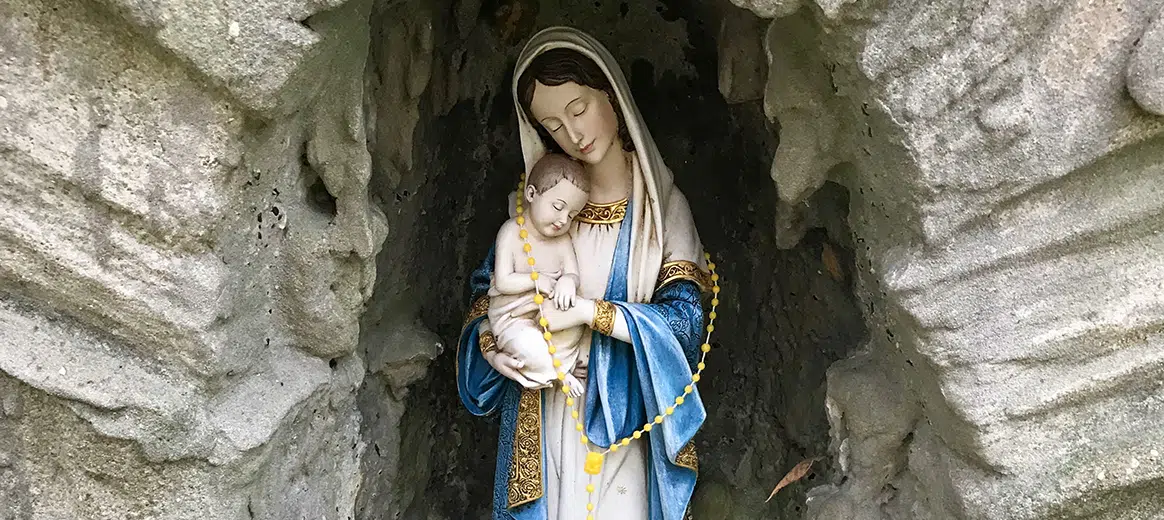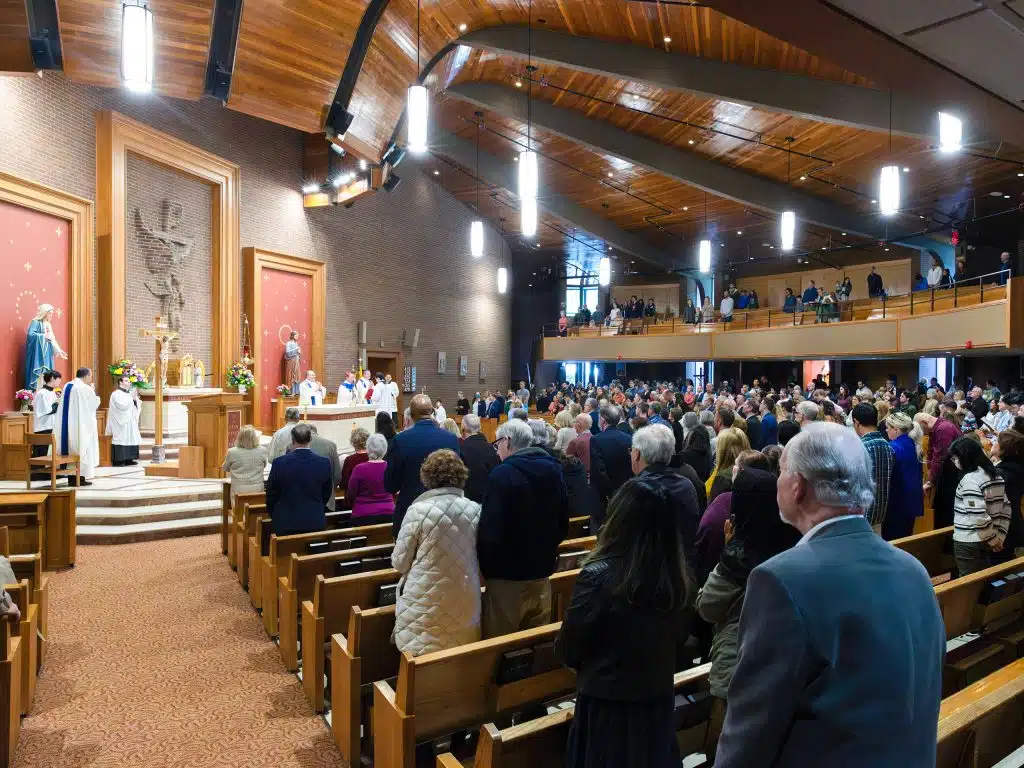It is well known that the church dedicates both May and October to the remembrance of the Blessed Virgin Mary. May’s commemoration is more general — the Mother of God in all her splendor — whereas October’s is quite specific: Mary under her glorious title, Our Lady of the Rosary.
This makes eminent sense. Before we lift up our voices in the prayerful recitation of the holy rosary, insightfully hailed as “the Gospel in miniature,” we must know to whom we turn.
The focus on Mary during the second full month of spring may be likened to a student’s first two years at the university where he is enrolled in certain core classes: English, history, mathematics, etc. October’s concentration on Our Lady and her holy rosary is similar to the business, political science or teaching-inclined collegian who specializes in his particular discipline during the last two years.
The rosary takes on deeper meaning when we come to acknowledge Our Blessed Mother and how she is related to her divine Son and his chosen bride, the church.
Father Luigi Gambero (1930-2013), an Italian Marianist priest who had considerable expertise in the study of the Fathers of the Church, identified dozens of passages regarding Mary and her singular mission that were written in the early centuries immediately after the passion, death, resurrection and ascension of Our Lord Jesus Christ. In “Mary and the Fathers of the Church: The Blessed Virgin Mary in Patristic Thought” (San Francisco: Ignatius Press, 1999), translated by Father Thomas Buffer, Father Gambero demonstrated that our filial love for the ever-virgin Mother of the Savior and our sincere devotion to her are deeply rooted in the history, theology and practice of the church.
For example, St. Peter Chrysologus, bishop and doctor, whose feast is July 30th, was convinced of the sanctity of Mary. He penned these words about 1,600 years ago: “The Virgin is truly blessed, for she possessed the splendor of virginity and achieved the dignity of motherhood. She is truly blessed, for she merited the grace of a heavenly conception and wore the crown of integrity. She is truly blessed, for she received the glory of the divine Son and is queen of all chastity.”
We can only be amazed at what Our Lord did through his mother. “When someone conceives as a virgin, gives birth as a virgin, and remains a virgin, this is not normal; it is a sign. It is not the work of logic but of divine power. Nature’s Maker did it, not nature. It is not common but unique. It is divine, not human. Therefore, let hapless philosophy cease trying to explain it” (pg. 295).
One may argue: I do not find anything in this text — or, for that matter, in any works of the Church Fathers — that advocates the praying of the rosary, which is, after all, a much later development in Christian piety.
Yes, the rosary is a later development. Nevertheless, St. Peter Chrysologus and the other Fathers of the Church laid the essential foundation. It is right and just that we invoke the mother of the master. She is close to him in paradise as she was here on earth. The rosary is the ideal prayer. Pope John Paul II conceded that it was his favorite prayer.
This excellent book, “Mary and the Fathers of the Church: The Blessed Virgin Mary in Patristic Thought,” provides salutary reflection especially for this month of our dear mother whom we venerate with our rosaries in hand.
Msgr. Mangan teaches at Mount St. Mary’s Seminary in Emmitsburg, Md.



